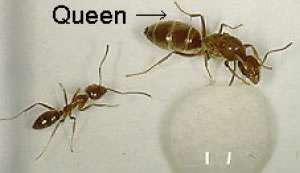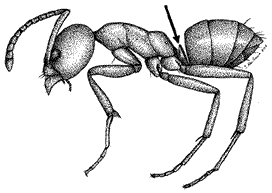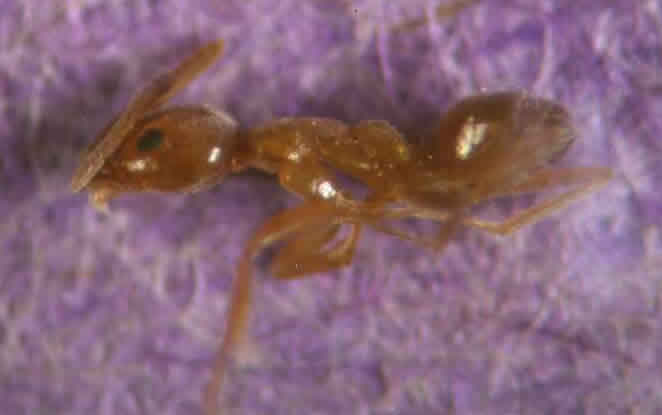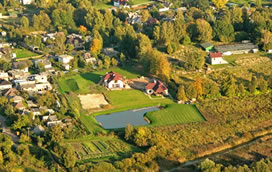 |
| Argentine ant worker and wingless queen |
Photo by P.Banko, U.S. Geological Survey |
Argentine Ant
-
Scientific Name:
- Linepithema humile (formerly Iridomyrmex humilis)
-
Family:
- Formicidae (ants)
-
Order:
- Hymenoptera (ants, bees, wasps)
-
U.S. Distribution:
- Southern half of continental U.S., California, Hawaii, and isolated populations as far north as Washington State, Maryland, and Illinois
This page has three tables, (1) Identification, (2) Look-alike Pests, and (3) Biology and Habits.
Identification
| Match the Shape and Size | Match the Color |
|---|---|
 |
 |
|
|
| Illustration by J. MacGown, Mississippi State University | Photo by Neil Reimer, Hawaii State Department of Agriculture |
Look-alike Pests
| Look-alike Pest | Differences |
|---|---|
Odorous house ant (Tapinoma sessile) |
Node tiny, hidden by abdomen; rotten coconut odor when crushed |
Crazy ant (Paratrechina longicornis) |
Legs very long in relation to body; anal opening circular and surrounded by a circle of hairs (acidopore); no odor when crushed |
Biology and Habits
| Match the Food and Site | Match the Habits and Damage |
|---|---|
 |
 |
|
|
| Photo © Pinto & Associates | Photo © iStockphoto/Dainis Derics |